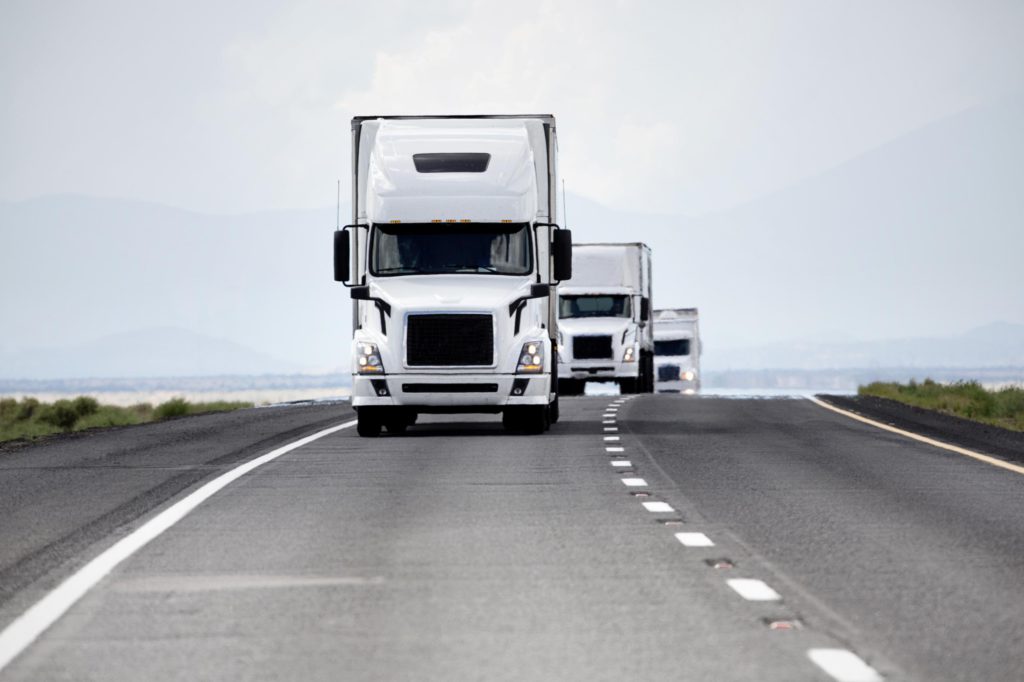Plan for automated truck convoys highlights growing vehicle autonomy
09 May 2017

09 May 2017
The introduction of automated truck convoys on European roads could be a step closer following the release of a detailed timeline that will see semi-automated HGVs on motorways by 2025.
Platooning is a system that will see trucks following each other in convoy, taking their speed and distance from a leading vehicle and automatically keeping their distance, braking and acceleration regulated.
This allows trucks to drive closer together, reducing their air-drag friction and therefore their CO2 emissions and fuel consumption by up to 10%. With automatic braking, platooning can also improve safety on the roads while using their space more effectively, delivering goods faster and reducing congestion.
Speaking at the European Parliament, Erik Jonnaert, secretary general of the European Automobile Manufacturers’ Association (ACEA) presented the ′EU Roadmap for Truck Platooning‘ to policy makers. The roadmap provides an overview of the steps that are necessary to implement multi-brand platooning by 2023.
Jonnaert comments: ′The technology for platooning with trucks of the same brand is already available today. But clearly customers will need to be able to platoon with trucks of different brands, so our next objective is to introduce multi-brand platooning. Technology is already available for trucks from the same company to platoon, but the roadmap states that by 2023 manufacturers will be able to have trucks running autonomously in convoy, with each working together from the start of 2018.
In the meantime, various regulations will need to be implemented by the European Parliament, including road markings, signalling, type approval and periodic inspection, all of which Jonnaert believes will be implemented by the 2023 deadline, at which point we could see platooning on roads around the continent.
Jonnaert continued: ′That is exactly where the policy makers come in. They will need to develop new rules, make changes to existing legislation, and harmonise international and EU rules. At the same time, it will be imperative to get political support for promoting the wide-spread introduction of platooning. Governments should, for example, introduce incentives, such as toll and tax reductions, CO2 bonuses or flexibility in driving time, to stimulate the market uptake of truck platooning.’
The announcement will also see the need for new traffic control systems to ensure that platooning trucks can travel safely amongst normal vehicles. ACEA has already highlighted that the move will require the European Parliament to build on the Declaration of Amsterdam and implement what it learnt in the Truck Platooning challenge of 2016. This will include the need for improved road signage, vehicle signs, and changes in regulations for direct and indirect visibility and in how other users signal when driving.
The move also signals the availability of technology that can create such logistic chains. The plan for semi-automated platooning means a driver will still be required, however it is another step towards fully autonomous vehicles and highlights the need for manufacturers to share technology across the spectrum of the market.
As well as platooning, the EU Parliament has also highlighted that it prefers car sharing schemes to ferry people around in the future. At a conference in April 2017, it highlighted its plans for the development of urban infrastructure to cope with the increase in people able to use the vehicles. It believes that car sharing will decrease the pressure on transport networks while freeing up spaces used for parking, as vehicles are in constant use. Speakers discussed a ′city of the future’ concept with more green space and less vehicle congestion and pollution, all thanks to the reduction in traffic as a result of different ownership models.